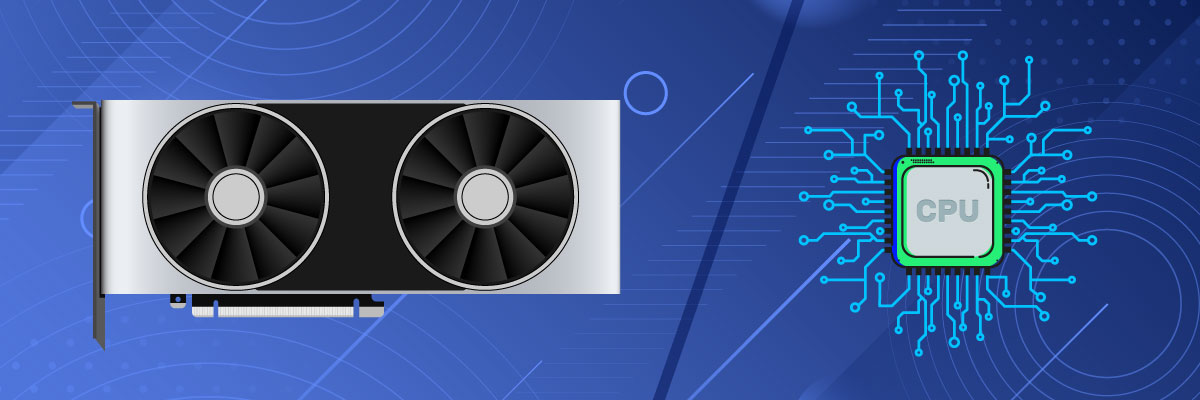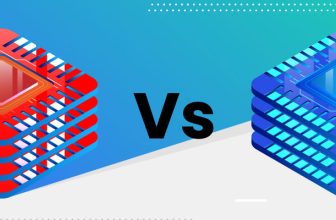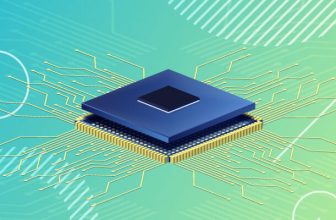Difference Between GPU and CPU

What Is A GPU? What Is It Used For?
A GPU or graphics processing unit is a processor that consists of numerous smaller and specialized cores. It works to swiftly manipulate the memory and speed up the computer.
The cores of a GPU work together to deliver immense performance by enabling a processing job to be split up and processed across multiple cores. A GPU is used for various specific tasks that need higher parallel processing capabilities, such as AI, HPC, gaming, and supercomputing.
Pros And Cons Of GPU
Pros
- A GPU functions independently and is capable of increasing the system performance to a great extent.
- It comes with its own RAM, which is faster than the system memory.
- It is ideal for graphics-oriented gaming and enhances the video experience significantly.
Cons
- In spite of being several in number, GPU cores have lesser clock speed and power than the CPU cores.
- GPUs have a limit on the maximum memory capacity they can have.
- GPUs have limited application programming interfaces (API).
- GPUs consume more power and hence can overheat easily.
What Is A CPU? What Is It Used For?
A central processing unit or CPU, aka the brain of the computer, is made up of billions of transistors and has many processing cores.
A CPU is responsible for executing the commands and processes required to run the computer and its operating system. The CPU determines how fast the programs on a system can run.
Pros And Cons Of CPU
Pros
- A CPU eases the designing of small computers like tabs, mobile phones, and embedded computers.
- It is suitable for tasks that need serial processing.
- When used in a great number, the processors can enhance the power of logical and arithmetic operations of a computer.
- A CPU can process business and mathematical data rapidly.
Cons
- A CPU, unlike GPU, is not specialized, and so it takes longer than GPU for doing the same task.
- It causes heat generation. So, the more it is active and performs speedily, the hotter it gets.
- It is quite fragile. One needs to be very careful and precise while installing or repairing it.
- It is a relatively costly component than the other parts of a computer.
Difference Between CPU And GPU
| Specs | CPU | GPU |
|---|---|---|
| Architecture | A CPU is designed to carry out a broad range of tasks quickly but has limitations in running concurrent tasks | A GPU is designed to render concurrent images and videos of high resolution quickly. |
| Core Count | It consists of a few but powerful cores. | It has many more cores, but they are not as powerful as those of a CPU. |
| Latency and Throughput | It is fast and low on latency. | It is not as fast but delivers high throughput due to parallel processing. |
| Performance | It can perform well in everyday computing and tasks involving serial processing by taking many diverse sets of instructions. | It performs well in many concurrent graphics and HPC tasks by taking optimized parallel sets of instructions. |
| Use Cases | 3D processing, data analysis, power efficiencies, machine learning and deep learning, video rendering and streaming | Continuous integration (CI)/continuous delivery (CD) toolchains, audio and video transcoding, big data, build servers, game servers, scientific computing |
Both dedicated CPUs and GPUs can be used independently to achieve specific outcomes. CPUs are essential for daily computing needs, whereas GPUs do good in graphics-based and supercomputing operations. Both CPU and GPU computing can be utilized together for the highest levels of performance for certain tasks.





